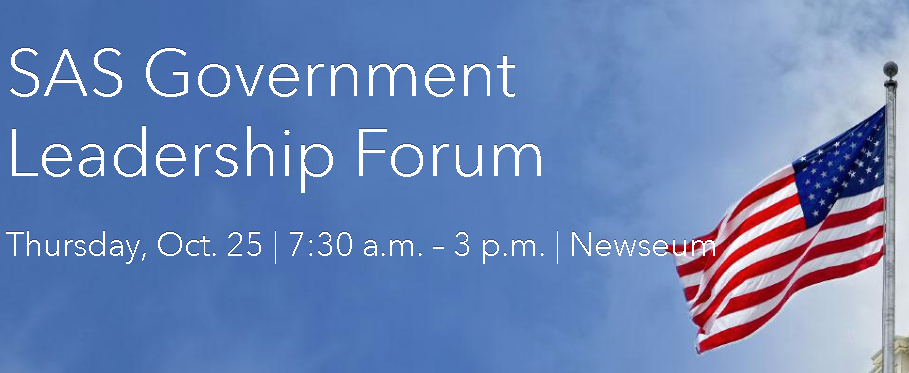
Creative government workforce approaches come in many forms. Some time ago, the US Environmental Protection Agency (EPA) offered employees an interesting choice to incentivize them to stay. Employees could either telework from home one day per week or receive $1,000.
As Jon Lemon, principal industry consultant at SAS told the crowd at the SAS Government Leadership Forum, the decision was easy for his wife, who works at the agency.
“We live 17 miles from her office, but with traffic the drive could take more than an hour, so the ability to telework that one day was worth much more than the money,” he said.
The EPA’s program, though, got Lemon thinking. Would an employee who shared his wife’s education, work experience, and responsibilities, but lived in a much-less congested part of the country, prefer the money if given the same opportunity?
“Someone had to look at the data and try to figure out what kind of incentives do people want that will get them to do the desired behavior – in this case staying with the agency,” Lemon said. “That is what gets me excited. There is a lot of data around the government workforce. It is now a matter of mining that data and understanding how we can actually use it.”
Check out this video to learn more about workforce analytics for government.
While most think of analytics as a way to improve organizational efficiency or program performance, it can also improve workforce outcomes. As the government manages the large wave of baby boomer retirements currently underway, analytics can offer a way to better manage that change. Using government workforce data, agencies can better understand the work that retiring employees do, the skill sets needed to replace them, and what positions are most important to mission success.
For other agencies, analytics could help improve the skill sets of employees already working.
Alexander Cohen, program manager for the US Census Bureau’s Center for Applied Technology, shared how his office offered a course on software development. He originally thought no one would be interested – especially since the class did not offer any type of educational credit.
He quickly learned otherwise. More than 100 people signed up in a few hours.
“People want to learn new techniques,” Cohen said. “They become excited when the right opportunities are in front of them. Part of innovation is providing people with these opportunities to learn and use new skills. This kind of development helps them feel invested in their work and their workplace.”
Cohen mentioned one employee at the Census Bureau that wanted to learn more about application development. She had no experience in that area, but a desire to learn. When a project came up that she could tackle in this area, she was given the chance to try. A few weeks later a mobile app was born, thanks in part to her contribution.
Finally, Dr. Nick Anderson, the senior director for research and policy at the Institute for Veterans and Military Families, believes analytics can help better incorporate veterans into the government workforce. He noted that federal agencies have increased the hiring of military veterans as part of the government’s Veterans Hiring Initiative. Using analytics can help ensure that veterans are hired for jobs that fit the skill sets they learned while in service.
“Analytics can help connect talent to the right jobs,” Anderson said. “So many veterans have a base of STEM skills that government truly needs. We need to make sure, though, there is not a disconnect between the skills of veterans and the jobs they are hired to do.”
To watch this panel session and others from the event, please visit www.sas.com/glf-virtual.
